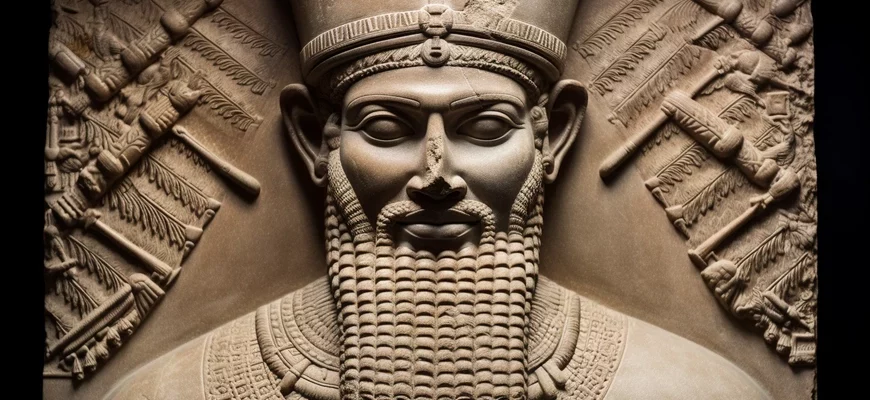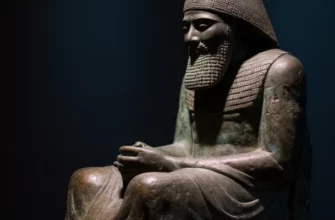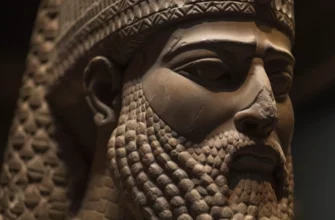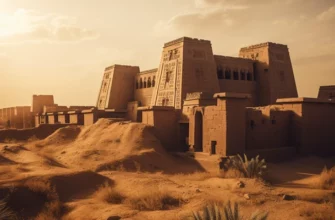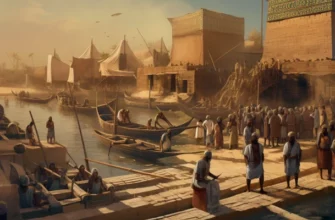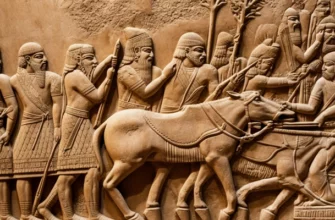Sumerian art is a diverse creative endeavor that reveals the cultural heritage of a civilization that existed in the Ancient East more than five thousand years ago. The Sumerians were the first civilization to emerge in what is now Iraq, and they left behind a rich cultural heritage.
Sumerian art includes various forms of expression: sculpture, painting, relief, pottery, wall painting, etc. They were used for both religious and civil purposes. One of the most famous examples of Sumerian sculpture is the “Head of a Girl” from Uruk, which is made of limestone and is incredibly realistic.
The Sumerians made pottery such as dishes, kitchen utensils, and toys. Wall painting was a popular art form and depicted a variety of themes, from religious to everyday life. One of the most famous examples of wall painting is the Epic of Gilgamesh, which depicts the adventures of the legendary king Gilgamesh.
Sumerian art reflected their religious, social, and cultural beliefs. It helped to preserve and pass on knowledge and traditions to future generations. Overall, Sumerian art is an extremely valuable part of the world’s cultural heritage and helps us to better understand the history and culture of this ancient civilization.
Forms of Sumerian art: sculpture, painting, reliefs, and ceramics
The forms of Sumerian art were very diverse and included such types as sculpture, painting, reliefs, and ceramics.
Sumerian sculpture mainly depicted deities, kings, and other important figures. The most famous examples of Sumerian sculpture are the “Head of a Girl” from Uruk, the “Statues of Gudea” from Girba, the “Statues of Entemen” from Gipsy, and the “Statues of Gudea from Lagash.”
Sumerian painting was mostly represented in the form of murals on the walls of temples and palaces. Here they depicted gods, kings, animals, and various scenes from everyday life. Sumerian paintings were often executed in bright colors, which allowed them to emphasize the emotional component of the depicted.
Sumerian reliefs mainly reflected events from the lives of kings and deities. Reliefs can also be found on the walls of palaces and temples, where they served to tell stories and reflect religious beliefs. The most famous examples of reliefs are the “Stele of Hammurabi” and the “Stele of Naram-Sin.”
Sumerian ceramics were diverse and included clay, glass, and stone products. They made dishes, vases, trays, and toys. Sumerian ceramics often had curved shapes, various ornaments, and symbols.
All these forms of Sumerian art are a valuable source of knowledge about the culture and history of this ancient civilization.
Motifs and themes in Sumerian art: mythology, religious and historical events
The motifs and themes in Sumerian art were related to mythology, religious and historical events.
Mythological motifs were very common in Sumerian art. Deities were often depicted in reliefs and sculptures, and their characteristic features and symbols were frequently used in paintings and ceramics. Examples of such deities include Enlil, Inanna, Ea, and others.
Religious motifs were also an important element of Sumerian art. The walls of palaces and temples were decorated with depictions of various religious ceremonies and rituals, as well as scenes from mythological stories related to deities and their actions. Religious motifs can be found in all forms of Sumerian art, from sculpture to ceramics.
Historical motifs were also popular in Sumerian art. Reliefs and sculptures depicted kings and military exploits, while scenes from everyday life, such as trade, crafts, and agriculture, were depicted on the walls of palaces and temples.
Thus, the motifs and themes in Sumerian art were very diverse and reflected various aspects of the life and culture of this ancient civilization.
The influence of Sumerian art on modern culture
Sumerian art has a significant influence on modern culture in many ways. Below are a few examples:
Architecture: Sumerian architecture is notable for its use of complex structures and construction techniques. Structures such as zigzag and layered domes were found in Sumerian buildings and are used in modern architecture.
Literature: The Sumerians were the first people in the world to use written language. They created numerous literary works, such as the Epic of Gilgamesh, which have become an important source of information for modern literary works.
Music: The Sumerians created the first musical instruments, such as the lyre and harp. Their music is used in modern musical compositions.
Religion: Sumerian religion had a significant influence on many of the world’s religions, including Judaism, Christianity, and Islam. Many religious rituals and symbols associated with the Sumerian gods still exist today.
Art: Sumerian art, particularly sculpture and reliefs, has influenced many different art styles, such as the Renaissance and Modernism. Many contemporary artists use Sumerian art motifs and techniques in their works.
Thus, Sumerian art is an important element of modern culture, and its influence can be seen in many different aspects of life.
Astronomy: The Sumerian civilization is known for its knowledge of astronomy. They created a calendar based on observations of the movement of the planets and discovered many new stars. Sumerian knowledge of astronomy has been used in modern space research.
Medicine: Sumerian medicine was known for its knowledge and treatment techniques. They were the first to use painkillers and anesthesia during operations. Many of the methods developed by the Sumerians are still used in modern medicine.
Philosophy: Sumerian philosophy was known for its research in metaphysics and ethics. Sumerian philosophers studied the nature of man and society and asked philosophical questions that are still relevant today.
All these aspects of Sumerian culture have left a significant legacy to humanity and have an impact on modern life. Studying and understanding Sumerian culture helps us to better understand the world we live in and our own roots.
Conclusion: the significance of Sumerian art for the modern world
Sumerian art is of great importance to the modern world, as well as to the history of humanity as a whole. The Sumerians created one of the largest and most influential civilizations of the ancient world, which has left its mark on many aspects of modern life.
Sumerian art reflected not only their culture and history, but also their knowledge and technology. Their ideas and inventions have found application in many fields, including architecture, art, medicine, astronomy, and philosophy.
Studying Sumerian art helps us better understand the world we live in and our own roots. It allows us to preserve and pass on this valuable heritage to future generations so that they too can learn from the Sumerians and understand how they influenced the development of the world.
